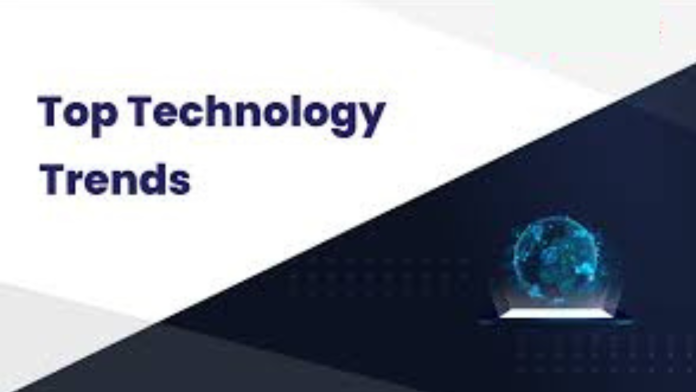As we move toward the year 2023, it’s clear that technology will continue to be a driving force in shaping our world. From artificial intelligence to blockchain to the Internet of Things, there are a variety of trends that are poised to transform industries and our daily lives in the coming years.
In this blog post, we’ll explore the top five tech trends that are expected to take over in 2023. We’ll dive into the latest developments and innovations in areas such as machine learning, cybersecurity, and virtual reality. We’ll also discuss how these trends are expected to impact businesses, consumers, and society as a whole.
By staying ahead of these tech trends, businesses can gain a competitive advantage and stay relevant in a rapidly evolving landscape. Consumers can also benefit from the convenience and enhanced experiences offered by these new technologies.
Whether you’re a tech enthusiast or simply curious about what the future holds, this post will provide a fascinating glimpse into the world of tech in 2023. By understanding these top tech trends, you can position yourself and your business for success in the years to come.
5 Tech Trends Set to Take Over 2023
1. Artificial Intelligence: Artificial Intelligence (AI) is an area of computer science that aims to create intelligent machines that can perform tasks that typically require human intelligence, such as visual perception, speech recognition, decision-making, and language translation. Emerging AI technologies refer to new and innovative approaches in AI that are currently being developed or have recently been introduced.
Some examples of emerging AI technologies include:
.Deep Learning: A subset of machine learning that uses neural networks with multiple layers to model and solves complex problems.
Reinforcement Learning: A type of machine learning in which an agent learns to make decisions in an environment by receiving feedback in the form of rewards or penalties.
Generative Adversarial Networks (GANs): A type of deep learning algorithm that can generate new data samples that are similar to a given dataset.
Explainable AI (XAI): AI systems that can explain how they arrive at their decisions or recommendations, making them more transparent and trustworthy.
2. 5G: It is the fifth generation of wireless technology that promises to deliver faster speeds, lower latency, and more reliable connectivity than previous generations of wireless technology. Here are some emerging trends in 5G:
Expanded Coverage: As 5G networks continue to expand, they are reaching more areas, including rural communities, where access to high-speed internet has traditionally been limited.
Private 5G Networks: Private 5G networks are being used by businesses and organizations to create local wireless networks that offer faster speeds, greater security, and more control than public networks.
Integration with Edge Computing: 5G networks are being integrated with edge computing, which allows data to be processed and analyzed closer to the source, reducing latency and improving performance.
Network Slicing: Network slicing is a technique that allows 5G networks to be divided into multiple virtual networks, each with its own characteristics and capabilities, allowing for more efficient use of network resources.
3. Virtual reality (VR): VR is a computer-generated environment that simulates a physical presence in a real or imagined world. Here are some emerging trends in VR:
Social VR: Social VR is a type of virtual reality experience that allows people to interact with each other in a shared virtual space, which is expected to revolutionize the way people communicate, collaborate, and socialize.
VR for Training and Education: VR is being used for training and education in various fields, such as healthcare, military, and aviation, where it offers a safe and cost-effective way to simulate real-life scenarios.
VR for Therapy: VR is being used as a therapeutic tool to treat various mental health conditions, such as anxiety, PTSD, and phobias, by creating safe and controlled environments for exposure therapy.
VR for Gaming: VR is becoming increasingly popular in the gaming industry, offering immersive and interactive experiences that allow players to explore virtual worlds in unprecedented ways.
4. Cyber Security: Cybersecurity refers to the protection of computer systems and networks from theft, damage, or unauthorized access. Here are some emerging trends in cybersecurity:
Artificial Intelligence (AI) and Machine Learning (ML): AI and ML are being used to develop advanced security solutions that can detect and respond to threats in real-time, as well as to analyze large amounts of data to identify patterns and vulnerabilities.
Internet of Things (IoT) Security: With the proliferation of IoT devices, there is an increased need for securing these devices and their connections to networks, as they can potentially be exploited by cyber attackers.
Cloud Security: As more businesses and organizations move their data and applications to the cloud, there is a growing need for secure cloud infrastructure and services.
Zero Trust Security: Zero trust security is an approach to cybersecurity that assumes that every user and device on a network is a potential threat, and requires constant authentication and verification before granting access to resources.
5. Blockchain: Blockchain is a decentralized, distributed ledger technology that allows for secure and transparent record-keeping of transactions. Here are some emerging trends in the blockchain:
Decentralized Finance (DeFi): DeFi is a blockchain-based financial system that allows for decentralized lending, borrowing, and trading without intermediaries, offering greater transparency and accessibility to financial services.
Non-Fungible Tokens (NFTs): NFTs are unique digital assets that are stored on a blockchain, offering new possibilities for ownership and authenticity of digital art, collectibles, and other digital assets.
Interoperability: Interoperability refers to the ability of different blockchain networks to communicate and work together, allowing for greater connectivity and efficiency in the blockchain ecosystem.
Sustainability: As concerns about the environmental impact of blockchain grow, there is a growing focus on developing more sustainable blockchain solutions, such as proof-of-stake (PoS) consensus algorithms and renewable energy sources.
In conclusion, the emerging trends in technology discussed in this blog post demonstrate the ever-evolving nature of the tech industry. The world is constantly changing, and technology is evolving to meet new challenges and opportunities. From AI and 5G to VR and cybersecurity, these emerging trends have the potential to transform the way we live and work and open up new possibilities for innovation and growth.
However, these trends also come with their own set of challenges and concerns, including issues related to privacy, security, and ethics. It will be important for developers, policymakers, and users alike to work together to address these challenges and ensure that these technologies are used in a responsible and beneficial way.
Overall, the future of technology is exciting and full of potential, and we can look forward to continued advancements in the years to come.



